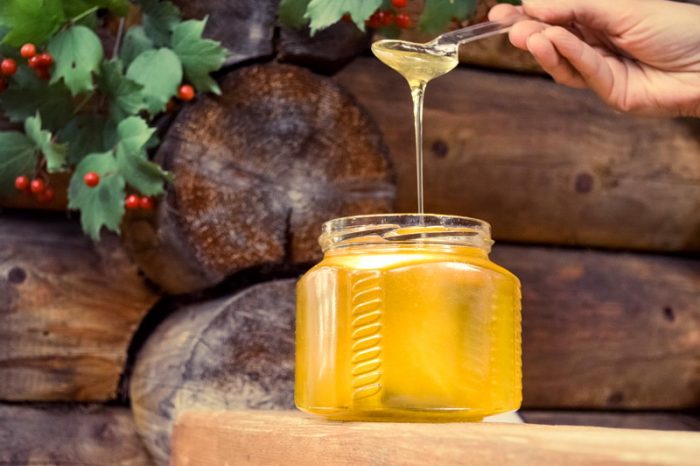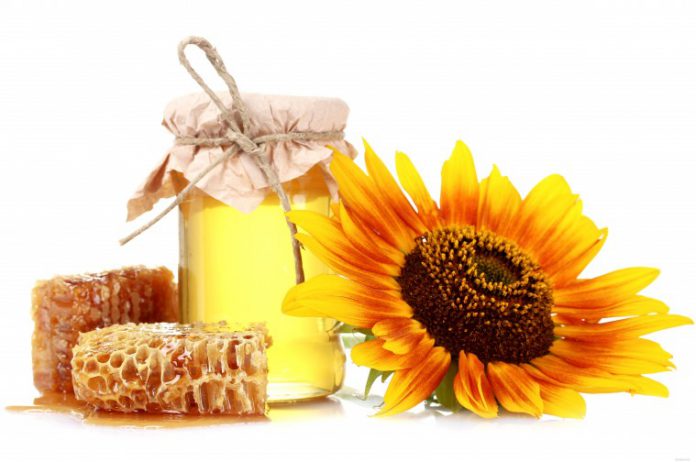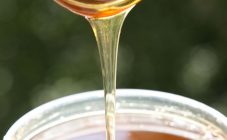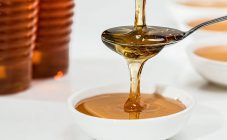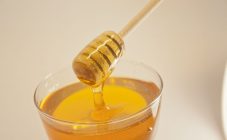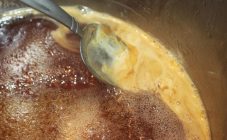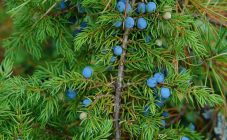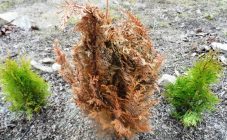Content:
Bee honey belongs to unique products and is a kind of gift from nature itself. Its medicinal and medicinal properties have been known since ancient times. Thanks to the amazing combination of wonderful taste and medicinal properties, natural honey takes first place in the top of the healthy products. Almost every person at home has a jar of fragrant and tasty treats used for the prevention and treatment of many diseases.
Why honey is not candied
Therefore, the question is quite understandable why purchased honey is not candied, what this means, and whether this is a criterion for its naturalness. According to its structural structure, honey consists of equal amounts of fructose and glucose. The crystallization time is determined depending on which component will be larger. If glucose predominates, honey begins to crystallize quickly. An excess amount of fructose allows this bee product to remain in a liquid state for a long time.
Reasons Why Sugaring Doesn't Happen
Many lovers of this delicious delicacy, who have decided to stock up on a useful product for future use, are interested in if the purchased honey does not become candied for a long time, what does this mean? What then is an indicator of naturalness? Beekeepers with many years of experience give several reasons why honey has not been candied for a year:
- Different honey varieties can crystallize in different ways. It depends on the amount of fructose, a natural natural sweetener, and the amount of glucose, a high-calorie sweet component. In the case of the predominance of the first component, the formation of sugar crystals will proceed slowly. A striking example is May, acacia or honeydew honey varieties, which in their original liquid form can be stored for a long time.
- Sugar capacity depends on temperature exposure. In the cold season, the formation of sugar crystals slows down. A similar effect occurs when the temperature rises above 30 degrees. However, such changes negatively affect the beneficial properties of the product. Usually, for long-term storage of honey in a liquid state, after pumping it out for one to one and a half months, it is stored at a temperature of 0 degrees. After this period, he is moved to a room with a temperature not higher than 14 degrees.
- An important reason that affects the consistency of honey is the amount of water in the product. An increase in moisture up to 18% reduces its ability to crystallize, such honey will not be solid, it can be in the form of a paste. However, the addition of water can cause the product to ferment and spoil quickly.
The addition of sugar syrup to honey significantly reduces its sugar-sugar property.
All of the above reasons give an answer why last year's honey is not candied and remains in a liquid state for a long time.
Crystallization rate factors
The question of converting liquid honey into a solid state worries many honey lovers.
The crystallization rate depends on the following factors:
- The amount of glucose. Honey with its high content quickly turns into a solid state.
- The presence of microscopic germ crystals of glucose, pollen grains and mechanical by-impurities serves as a kind of crystallization centers. The greater their number, the faster the rate of transformation of a liquid product into a solidified state passes.
- Mixing. If the honey mass is often stirred with a regular spoon, new sources of crystallization are formed.
- Packaging tableware. Storing honey in a thin-walled container significantly increases the crystallization rate. If honey is packed in a square container with right corners, then the process of precipitation of the product will start from the corners.
Causes of Sugaring: Natural and Unnatural
Bee honey can be sugar-coated for many reasons. The most common type of honey plant, from which sweet pollen is collected, is considered to be the most common, natural, affecting the crystallization of the honey product. Honey collected from flowers of alfalfa, sunflowers, mustard, rapeseed and other similar crops will sugar faster than honey from cherry blossoms, sage, raspberries or fireweed.
Other natural causes of honey thickening include:
- Using unripe honey.
- Bad weather conditions.
- Pollen collection site.
- Storage temperature rise above +10 degrees.
Is real honey candied
The crystallization process is a sign of both a natural product and a counterfeit. The difference lies in the appearance and the rate of transition to the crystalline form. The natural product quickly begins to sugar, especially when the storage temperature drops. Forged honey with excess sugar thickens slowly. The formation of fluffy loose foam and white spots of air bubbles inside speaks in favor of naturalness. Almost any honey of natural origin with a high pollen content begins to thicken. If the honey is not sugar-coated after a year, then you need to think about why this did not happen.
Why do some varieties remain liquid
The type of honey is directly related to the kind of flowers from which the toiling bees collect sweet nectar. There is practically no pure variety; it necessarily contains impurities of other flowers. This is due to the fact that during the mass flowering of one species of flowering plants, flowering occurs and other plants from which pollen is collected.
Therefore, natural honey cannot be absolutely "pure", it must contain impurities of other flower cultures. It should be noted that the amount of collected sweet nectar from other flowers is minimal, therefore, the name of the variety is determined by the mass flowering of flowers during the collection period.
To understand why natural honey is not candied for a long time, it is recommended to familiarize yourself with the most common varieties of this amazing natural delicacy:
- May honey. Almost everyone knows about the benefits of a bee product collected in early spring. This is due to the significant predominance of fructose and low calorie content. Therefore, May honey is well absorbed without irritating the digestive tract. The pollen for it is collected by insects before the mass flowering of the first peduncles begins. The honey product is pumped out in the last month of spring or early summer. Natural May honey stays in a liquid state for a long time.Often, under the guise of this useful product, fakes are sold, in which sugar syrup is added to feed the bees in the winter. Therefore, experienced beekeepers advise purchasing the May product in the fall after it has been infused and its natural shrinkage occurs.
- Acacia. A well-known white variety with a pleasant acacia aroma and a unique taste. It contains 35% sweet glucose, 40% fructose and a small amount of moisture. Freshly pumped honey by its consistency is similar to liquid saturated syrup and after shrinkage remains liquid for a long time. After crystallization, the acacia honey product forms small crystals of a light shade.
- Lime. This is another variety of white honey varieties that retains its original liquid structure for one month to six months. The honey product from linden is moderately viscous and after sugaring takes on a pasty state with fine crystals, which is similar to semolina in lumps. After long-term storage, honey can be stratified into solid and liquid fractions.
- Buckwheat. Crystallization of honey collected by bees from the fields of flowering buckwheat occurs very quickly. To keep the product in a liquid state, it must be stored under suitable conditions. This type includes a lot of useful substances necessary to maintain immunity, relieve inflammation, and treat colds.
After getting acquainted with the most popular varieties that remain in a liquid state for a long time, we can conclude that this effect most likely indicates the natural origin of the honey product and why last year's honey of these varieties was not candied.
